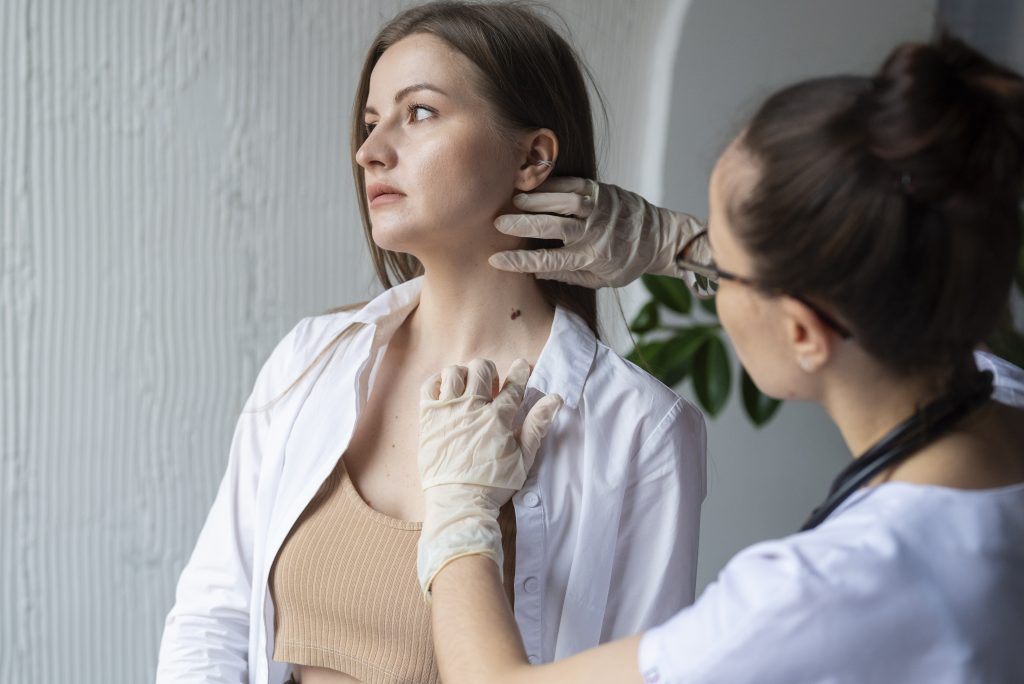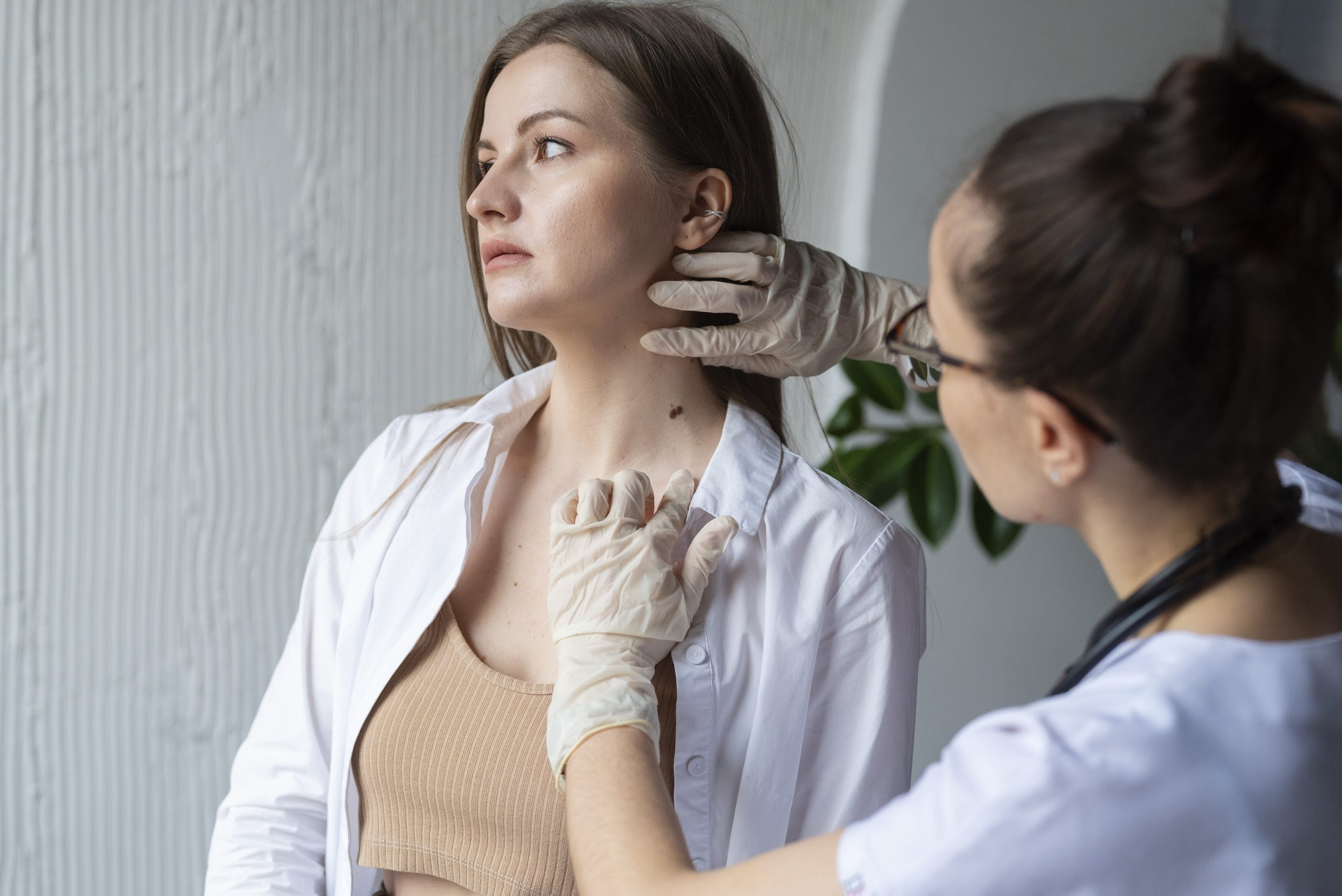Skin Cancer in India: Rising Cases and Preventive Measures

Skin cancer, once considered a rare disease in India, is steadily becoming a significant public health concern. Traditionally, India’s high melanin content in the population was believed to offer natural protection against ultraviolet (UV) radiation. However, increasing urbanization, changing lifestyles, environmental degradation, and lack of awareness are driving a surge in skin cancer cases across the country. While the incidence is still lower compared to Western nations, the trend is upward—and alarming.
This article explores the growing incidence of skin cancer in India, types and causes of the disease, regional trends, diagnostic challenges, and most importantly, practical preventive measures to address the issue at both individual and systemic levels.
1. Understanding Skin Cancer
Skin cancer is an abnormal growth of skin cells, usually caused by prolonged exposure to UV radiation. It can occur on any part of the body but is most commonly found on sun-exposed areas such as the face, neck, ears, arms, and legs.
There are three main types of skin cancer:
a) Basal Cell Carcinoma (BCC)
- Most common form worldwide
- Slow-growing and rarely spreads
- Appears as a pearly or waxy bump
b) Squamous Cell Carcinoma (SCC)
- Second most common
- Faster growing than BCC and can spread
- Often presents as a firm, red nodule or scaly lesion
c) Melanoma
- Least common but most aggressive
- Originates in pigment-producing cells (melanocytes)
- Can spread rapidly to other organs if untreated
2. Skin Cancer in India: The Emerging Scenario
Low Awareness, High Risk
India’s tropical climate and increasing outdoor exposure mean high levels of UV radiation throughout the year. Despite this, awareness of skin cancer among the general population remains low. Most people are unaware of the signs and symptoms, leading to delayed diagnosis and treatment.
Epidemiological Data
There is no centralized national registry dedicated specifically to skin cancer in India. However, data from regional cancer registries and hospitals reveal an increasing number of reported cases, especially in metropolitan cities and high-altitude regions like Himachal Pradesh and Jammu & Kashmir, where UV exposure is higher.
A study published in the Indian Journal of Dermatology observed a steady increase in non-melanoma skin cancers over the last two decades, particularly among older adults.
Demographic Insights
- Age group affected: While most cases occur in people aged 50+, younger patients are increasingly being diagnosed.
- Occupational link: Farmers, outdoor laborers, and construction workers are more vulnerable due to extended sun exposure.
- Gender differences: Slightly higher incidence in men, possibly due to greater occupational exposure.
3. Causes and Risk Factors in the Indian Context
a) Ultraviolet (UV) Radiation
India experiences intense sunlight year-round. UVA and UVB rays from the sun damage the skin’s DNA, leading to mutations that can trigger cancer.
b) Pollution and Ozone Depletion
Increasing air pollution and thinning of the ozone layer are compounding the intensity of UV radiation, raising cancer risks even in urban environments.
c) Lack of Sunscreen Use
Sunscreen use in India is still relatively low, especially among men. A general cultural preference for natural skin over cosmetic skincare products further reduces UV protection.
d) Tanning Practices and Fairness Products
Ironically, the use of chemical-rich fairness creams and skin-lightening products may weaken the skin barrier, making it more susceptible to sun damage.
e) Genetic Predisposition and Skin Type
Though darker skin has more melanin, which offers some protection against UV rays, it is not immune to skin cancer. Often, diagnosis occurs late because lesions are less noticeable on darker skin tones.
4. Regional and Occupational Exposure Patterns
a) High-Altitude Regions
In states like Himachal Pradesh, Ladakh, and Uttarakhand, residents and tourists are exposed to high levels of UV radiation due to thinner atmosphere and reflected rays from snow.
b) Coastal Regions
Fishermen and maritime workers in states like Tamil Nadu, Kerala, Goa, and West Bengal face prolonged sun exposure during their daily routines.
c) Agricultural Workers
Rural workers spending long hours in the sun without protective clothing or sunscreen are at a higher risk.
5. Symptoms and Warning Signs
Recognizing early symptoms is crucial for timely treatment. Key warning signs include:
- New growths or sores that don’t heal
- Changes in existing moles (size, shape, color)
- Itching, bleeding, or crusting skin lesions
- Dark patches with irregular borders
ABCDE Rule for Melanoma Detection:
- Asymmetry
- Border irregularity
- Color variation
- Diameter over 6 mm
- Evolving shape or size
6. Challenges in Diagnosis and Treatment
a) Misdiagnosis and Delay
Many general practitioners misidentify early skin cancers as benign growths, infections, or dermatological conditions like eczema or psoriasis.
b) Limited Access in Rural India
Dermatological and oncological services are scarce in rural and remote areas, leading to delayed diagnosis and poor prognosis.
c) High Treatment Costs
Advanced therapies such as radiation, immunotherapy, and surgery can be expensive and are not accessible to all, especially uninsured or low-income patients.
7. Preventive Measures: What Individuals Can Do
a) Daily Sun Protection
- Use broad-spectrum sunscreen (SPF 30 or higher), even on cloudy days.
- Reapply every 2–3 hours when outdoors.
- Wear wide-brimmed hats, sunglasses, and long-sleeved clothing.
b) Avoid Peak Sun Hours
UV exposure is strongest between 10 AM and 4 PM. Limit outdoor activity during these hours when possible.
c) Self-Examinations
Check your skin monthly for new or changing moles or spots. Early detection greatly improves the chance of successful treatment.
d) Diet and Antioxidants
Consuming a diet rich in antioxidants (fruits, vegetables, green tea) may offer protection against skin cell damage.
8. Systemic Solutions: What India Needs
a) Nationwide Awareness Campaigns
Public education via TV, radio, and digital media is essential. Initiatives similar to anti-tobacco or polio campaigns could inform people about skin cancer risks and symptoms.
b) Inclusion in National Cancer Programs
Skin cancer should be formally recognized in government-led non-communicable disease (NCD) programs to improve surveillance, funding, and treatment access.
c) Rural Dermatology Clinics
Mobile skin health clinics and teledermatology can bridge the gap in rural and underserved regions.
d) Mandatory Sun-Safety Training
Outdoor workers should be trained and encouraged to use hats, scarves, or clothing with UV protection during work hours.
e) Affordable Sunscreen Access
The government or NGOs can collaborate to distribute low-cost or subsidized sunscreen in rural schools, Anganwadi centers, and health camps.
9. Advances in Treatment and Diagnosis
India has made significant strides in cancer diagnostics, particularly in urban centers. Some developments include:
- Dermoscopy and AI-powered skin imaging for faster diagnosis
- Targeted immunotherapy for advanced melanomas
- Non-invasive treatments like photodynamic therapy
Hospitals such as AIIMS, Tata Memorial (Mumbai), and private centers in metros are equipped to handle complex skin cancer cases. However, scaling these services to Tier 2 and Tier 3 cities remains a challenge.
10. Case Studies and Testimonials
Example 1: A Farmer in Punjab
Ram Singh, a 62-year-old farmer from Ludhiana, ignored a growing sore on his cheek for over a year, thinking it was a skin infection. When it started bleeding, he visited a local doctor, who referred him to a cancer center where he was diagnosed with squamous cell carcinoma. He underwent successful surgery but wishes he had known earlier about the risks of sun exposure.
Example 2: A Software Engineer in Bangalore
Rita, a 35-year-old tech professional, was diagnosed with early-stage melanoma on her leg. She regularly wore shorts while jogging in the sun. Thanks to her awareness and early detection, the lesion was removed in time without requiring additional treatment.
Conclusion
Skin cancer is no longer a distant threat for Indians—it is a reality that requires immediate attention. Rising cases are a wake-up call for individuals, policymakers, healthcare professionals, and society as a whole. While natural melanin offers some protection, it is not a guarantee against skin cancer.
Simple yet consistent measures like sun protection, self-checks, education, and early treatment can save lives. By combining individual responsibility with systemic reforms and nationwide awareness campaigns, India can successfully confront the growing threat of skin cancer.


Leave a Comment